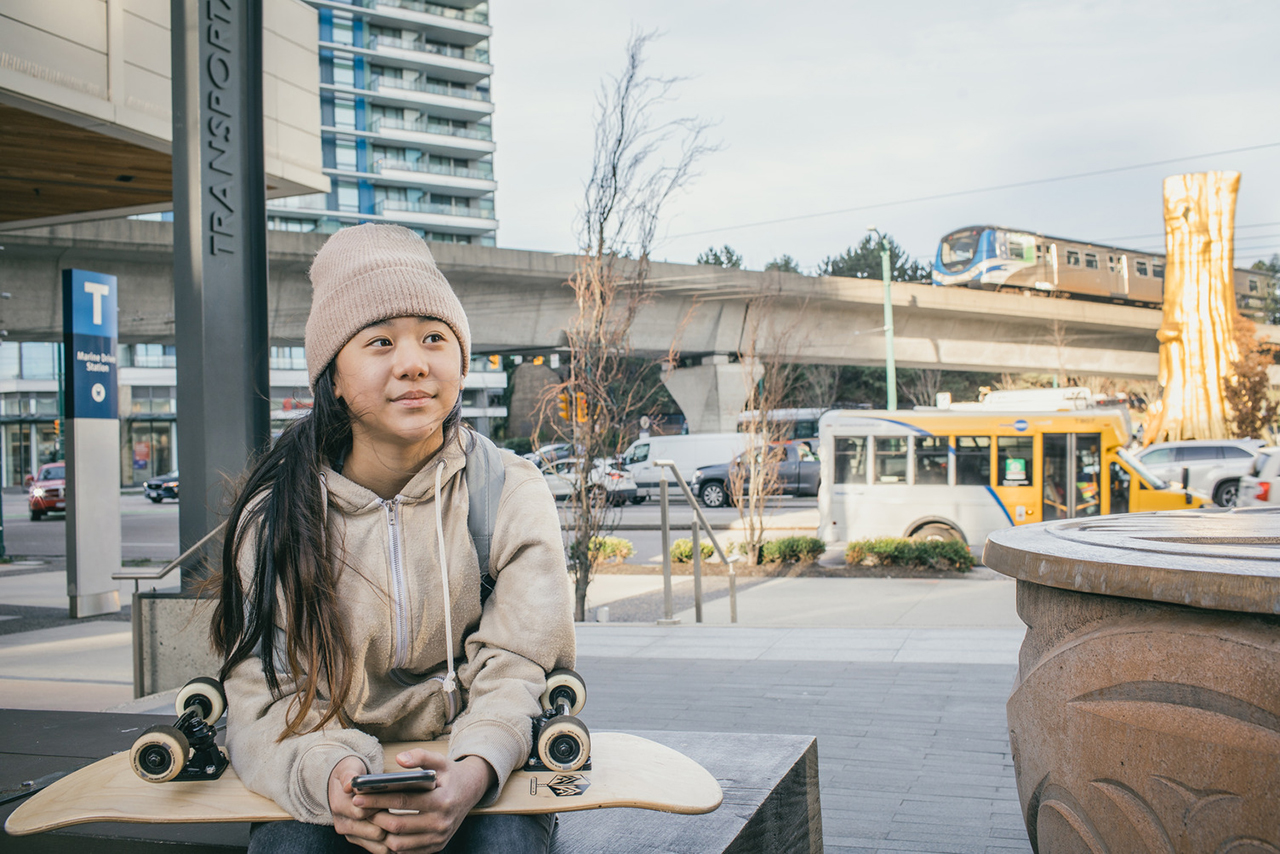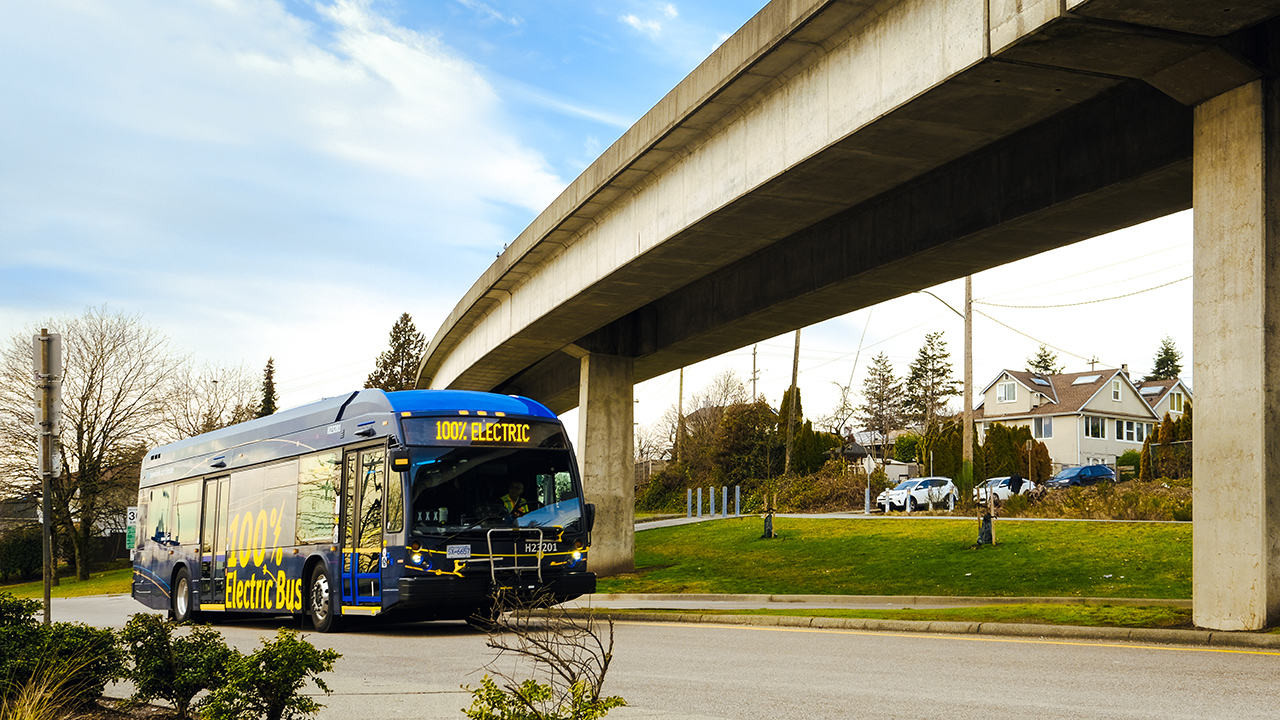A new era in transit: going climate friendly with green bonds and sustainable procurement
A new era in transit: going climate friendly with green bonds and sustainable procurement

The impacts of climate change are here and now. Extreme weather, such as heatwaves and flooding, are increasingly being felt in every part of Metro Vancouver. That means we all need to act, reducing greenhouse gas (GHG) emissions and preparing for climate impacts.
With transportation responsible for the largest share of GHGs in the region, it’s important we shift to walking, biking, rolling, transit, and zero-emission vehicles. For TransLink’s part — we’re moving to net-zero GHG emissions by 2050 throughout all our operations.
To reach net zero, we’ll be transitioning our fleet and facilities to renewable energy. But that’s only part of the story.
Beyond transit
One of the biggest opportunities of the 21st century will be a transition toward a low-carbon economy. And TransLink is playing a big role in driving this transition forward. To compete in this new economy, businesses and organizations will need to reimagine their investments and supply chain to be compatible with a 1.5°C world.
For us, that means using green bonds to fund critical projects across our enterprise. It also means working with our suppliers to achieve collective sustainability goals.
In this way, TransLink is blazing ahead as a transit authority.
Financing our transit future with green bonds

Green bonds are an exciting tool in sustainable finance. Businesses and governments can borrow money from lenders by issuing a bond, repaying it over time (with interest!). What makes a green bond special is that the funds must be used for projects that are environmentally friendly. Investors like green bonds because they create a return on investment while supporting a greener world.
TransLink launched its green bond program in 2018 — a first for transit authorities in Canada! Since then, we’ve issued $900 million in green bonds. Investors, with the majority being pension funds, but also insurers, banks, and governments, have snapped up these bonds to green their portfolios.
In turn, these funds have been transformative for us. Here are examples of projects we’ve funded by issuing green bonds:
- $250 million to fund SkyTrain extensions around the region
- $17 million to upgrade transit centres upgrades (such as LED lighting and building energy efficiency upgrades)
- $16 million to buy electric buses, such as four battery-electrics on the 100 22nd Street Station/Marpole Loop route.
Green bonds are an important tool for TransLink to deliver more sustainable transportation and fund clean energy improvements. We’ll keep working with funders who are pushing the envelope on green investing – leading to big transportation improvements in our region.
Launching our new Sustainable Procurement Strategy

As you can imagine, a transit system like TransLink’s requires a lot of equipment, fuel, and building materials to operate, maintain, and expand.
With over 3,200 suppliers, TransLink does business with companies large and small across the world. Last year, we purchased over $1.3 billion worth of goods and services, mostly from companies in B.C. and Canada.
Together, we have a huge opportunity to tackle climate change and other priorities.
With that in mind, we’ve just launched our first-ever Sustainable Procurement Strategy to shape how we do business with our supply chain. We’ll be integrating social and environmental priorities — alongside financial considerations — when we’re selecting and buying goods and services.
What does that mean? Doing more business with companies whose products and services offer a green or inclusive edge.
The new strategy has a number of goals, including:
- Achieving our climate goals
- Advancing reconciliation: ensuring at least five per cent of our contracts are with Indigenous-owned and operated suppliers by 2030
- Making it easier for more diverse suppliers to do business with us (including those owned and operated by women and minorities as well as small suppliers)
With the new Sustainable Procurement Strategy in place, we’re working on an action plan and policies to take us forward.
The new normal: using every tool in the box
It’s no longer enough for organizations to rapidly reduce GHGs in line with science-based targets.
Addressing the climate emergency requires us to use every tool in the box. That includes working with supply chains, investors, and other partners to build a low-carbon economy. For TransLink’s part, we’re using these tools — on top of working towards net-zero GHGs — to help usher in a new era in transit.





